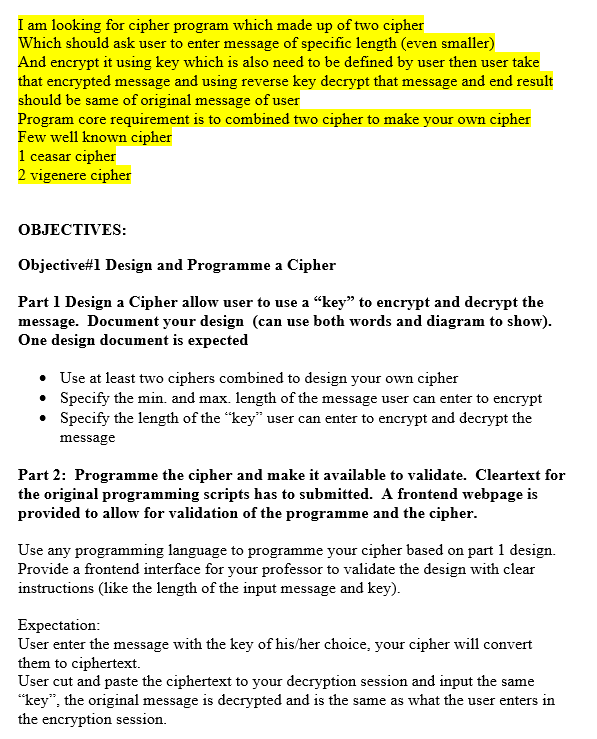Essbase – Encrypt Passwords using MaxL Scripts. First of all we need to generate random public and private encryption keys using the following command: essmsh –gk myKeys.txt. The resulting myKeys.txt will contain the keys, you should keep this file somewhere safe, here are the contents: Public Key for Encryption: 413183. Run Script opens a common file open dialog for choosing an existing script. MAXScript then reads and executes the selected script. But that 3ds Max can run as it would an ordinary MS file. Work provided on Autodesk Knowledge Network is licensed under a Creative Commons Attribution-NonCommercial-ShareAlike 3.0 Unported License. Actually.Decrypt V1 algorithm and V2 algorithm (introduced since max 9 sp1) is technically possible because maxscript is not compiled code.Interpretor need the real code string to run.So the real progress for 3dsmax is to decrypt the code first in memory and run it as the normal.ms code by script interpret engine.
- Decrypt Max Script Languages; Encrypting Script Files. MAXScript lets you create an encrypted copy of a specified script file with the same name prefix, but with the suffix.mse, in the same directory as the source script file. The encryption uses a fixed hidden key that lets it run on any 3ds Max system, but effectively hides the source of the.
- In order to work with them, the first thing that the admin needs is the encryption script and in the absence of it, the admin go for decrypting the database. (MAX) SET @encrypted = (SELECT.
By: Derek Colley | Updated: 2013-05-30 | Comments (16) | Related: 1 | 2 | >Encryption

Problem
You work in a shop that puts business or application logic in the SQL Server using stored procedures, views and functions to return values to the calling applications or perform tasks. This is not unusual in companies that use the SQL Server layer to perform business tasks, such as finance operations, or incorporate application functionality into the programmability layer. You wish to preserve secrecy on some procedures, views or functions in order to maintain security.
Solution
SQL Server stored procedures, views and functions are able to use the WITH ENCRYPTION option to disguise the contents of a particular procedure or function from discovery. The contents are not able to be scripted using conventional means in SQL Server Management Studio; nor do the definitions appear in the definition column of sys.sql_modules. This allows the cautious DBA to keep stored procedures and functions securely in source control and protecting the intellectual property contained therein. This tip will focus on encrypting and decrypting a user-defined function.
Encrypting a UDF
To encrypt a user-defined function, simply add WITH ENCRYPTION to the CREATE FUNCTION statement (after the RETURNS element). Throughout this tip, I will be building an encrypted UDF (and decrypting it) to demonstrate the principle.
First, create the UDF. Here's mine - it's a simple module that accepts an input string and returns the encrypted varbinary hash value. There are two vital pieces of information here that MUST NOT be given away to the user of the function - the encryption standard, and the salt.
In this example the salt is fixed and an attacker, given the encryption standard (SHA-256) and the salt, could be able to decrypt the hash into plaintext. We can view the definition of a function by finding it in SQL Server Management Studio, right-clicking and scripting out the function:
The attacker can also use sp_helptext, or query sys.sql_modules if he/she knows the function name:
There is some protection built in; by using role-based security or sensibly allowing the least required privileges to users, the attack surface can be lessened as the VIEW DEFINITION permission is required (or ownership of the function) in SQL Server 2005 upwards. Note in earlier versions, this permission is not required. The user may also have the permission granted implicitly by holding other permissions on the object. (See 'Metadata Visibility Configuration' at http://msdn.microsoft.com/en-GB/library/ms187113.aspx for more detail).
We can amend the function definition like so:
Note that WITH ENCRYPTION occurs after RETURNS, not before. With stored procedures, the WITH ENCRYPTION option occurs immediately after the CREATE PROCEDURE x ( @somevar) statement.
With our encrypted function we can attempt to script it out in SQL Server Management Studio again, or look at sys.sql_modules. Here's what we get:
Querying sys.sql_modules definition column for this function returns NULL. Executing sp_helptext returns the error:
Note the UDF is exactly as effective as it was before - we can still call it and return a value:
I'm using an undocumented stored procedure here called fn_varbintohex to convert the VARBINARY output from my function into a hexadecimal format, for portability between applications and clarity - it's not directly relevant to this example. Normally the VARBINARY output of HASHBYTES is passed directly to the calling application.
Decrypting a Function
Firstly, open a Dedicated Administrator Connection (DAC) to SQL Server. Using SQL Server Management Studio, this is easily done by prefixing admin: to the connection string upon connection of a query window. Note that the DAC can only be used if you are logged onto the server and using a client on that server, and if you hold the sysadmin role. You can also get to it by using SQLCMD with the -A option. Note: DAC won't work unless you're using TCP/IP; you'll get this rather cryptic error (in both SQLCMD and SSMS):
If you can't access the server directly for whatever reason, you can enable remote administrative connections (a remote DAC) as follows. You'll still need to use TCP/IP:
The procedure for decryption comes in three steps. First, get the encrypted value of the procedure definition from sys.sysobjvalues (via the DAC connection). Secondly, get the encrypted value of a 'blank' procedure, where the definition is filled in by '-'. Thirdly, get the plaintext blank procedure statement(unencrypted). Now XOR them together (XOR is the simplest of decryption procedures and forms the basis of many algorithms including MD5) as shown below to retrieve the output of the procedure. You'll find my take on this algorithm in the code example below:
If you still cannot access via DAC or prefer a code-based approach, then you can use one of a number of freeware third-party .NET-based decryption software packages to do this for you. The blog Sqljunkieshare also purports to have a method of doing this (code untested) that looks viable - you can find the link here:
http://sqljunkieshare.com/2012/03/07/decrypting-encrypted-stored-procedures-views-functions-in-sql-server-20052008-r2/ (use at your own risk)Decrypt Max Script Free
Next Steps
- SQLMAG: Decrypting a Stored Procedure:http://sqlmag.com/sql-server/decrypt-sql-server-objects
- CREATE PROCEDURE from Books Online:http://msdn.microsoft.com/en-us/library/ms187926.aspx
- CREATE FUNCTION from Books Online:http://msdn.microsoft.com/en-us/library/ms186755.aspx
- SQL Server Stored Procedure Tutorial and Example:http://www.mssqltips.com/sqlservertutorial/160/sql-server-stored-procedure/
- Getting Started with SQL Server Stored Procedures:http://www.mssqltips.com/sqlservertip/1495/getting-started-with-sql-server-stored-procedures/

Last Updated: 2013-05-30
Decrypt Max Script Download
About the author
View all my tips
-->
Applies to: SQL Server (all supported versions) Azure SQL Database Azure SQL Managed Instance Azure Synapse Analytics
This function uses a symmetric key to decrypt data.
Note
This syntax is not supported by serverless SQL pool in Azure Synapse Analytics.
Syntax
Note
To view Transact-SQL syntax for SQL Server 2014 and earlier, see Previous versions documentation.
Arguments
ciphertext
A variable of type varbinary containing data encrypted with the key.
@ciphertext
A variable of type varbinary containing data encrypted with the key.
add_authenticator
Indicates whether the original encryption process included, and encrypted, an authenticator together with the plaintext. Must match the value passed to ENCRYPTBYKEY (Transact-SQL) during the data encryption process. add_authenticator has an int data type.
authenticator
The data used as the basis for the generation of the authenticator. Must match the value supplied to ENCRYPTBYKEY (Transact-SQL). authenticator has a sysname data type.
@authenticator
A variable containing data from which an authenticator generates. Must match the value supplied to ENCRYPTBYKEY (Transact-SQL). @authenticator has a sysname data type.
Return Types
varbinary, with a maximum size of 8,000 bytes. DECRYPTBYKEY returns NULL if the symmetric key used for data encryption is not open or if ciphertext is NULL.
Remarks
DECRYPTBYKEY uses a symmetric key. The database must have this symmetric key already open. DECRYPTBYKEY will allow multiple keys open at the same time. You do not have to open the key immediately before cipher text decryption.

Decrypt Max Script
Symmetric encryption and decryption typically operates relatively quickly, and it works well for operations involving large data volumes.
The DECRYPTBYKEY call must happen in the context of the database containing the encryption key. Ensure this by calling DECRYPTBYKEY from an object (such as a view, or stored procedure, or function) that resides in the database.
Permissions
The symmetric key must already be open in the current session. See OPEN SYMMETRIC KEY (Transact-SQL) for more information.
Decrypt Max Script 2020
Examples
A. Decrypting by using a symmetric key
Decrypt Max Script Pastebin
This example decrypts ciphertext with a symmetric key.
B. Decrypting by using a symmetric key and an authenticating hash
This example decrypts data originally encrypted together with an authenticator.
C. Fail to decrypt when not in the context of database with key
The following example demonstrates that DECRYPTBYKEY must be executed in the context of the database that contains the key. The row will not be decrypted when DECRYPTBYKEY is executed in the Master database; the result is NULL.
See Also
ENCRYPTBYKEY (Transact-SQL)
CREATE SYMMETRIC KEY (Transact-SQL)
ALTER SYMMETRIC KEY (Transact-SQL)
DROP SYMMETRIC KEY (Transact-SQL)
Encryption Hierarchy
Choose an Encryption Algorithm